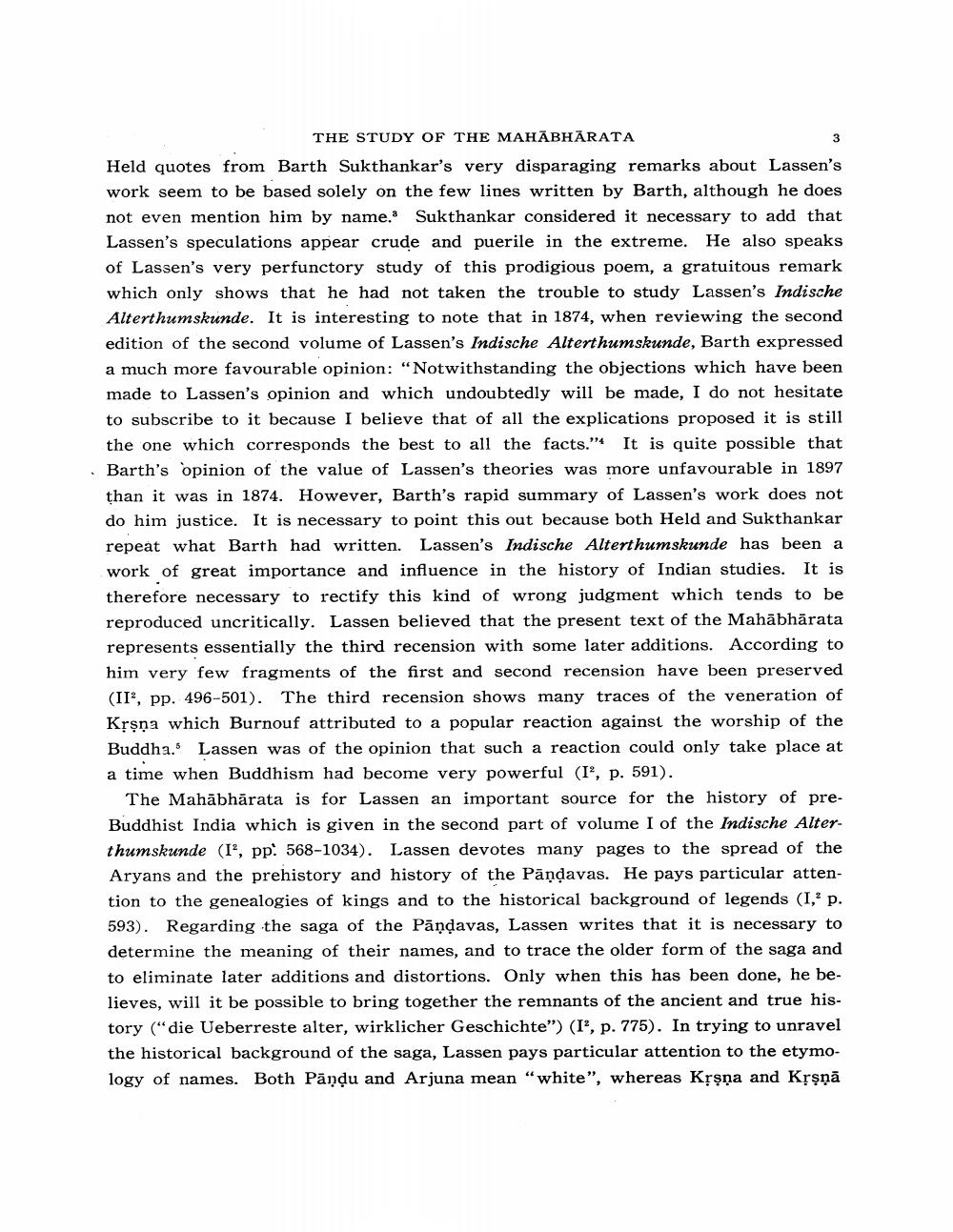Book Title: Study Of Mahabharata Author(s): J W De Jong Publisher: J W De Jong View full book textPage 3
________________ THE STUDY OF THE MAHABHARATA Held quotes from Barth Sukthankar's very disparaging remarks about Lassen's work seem to be based solely on the few lines written by Barth, although he does not even mention him by name. Sukthankar considered it necessary to add that Lassen's speculations appear crude and puerile in the extreme. He also speaks of Lassen's very perfunctory study of this prodigious poem, a gratuitous remark which only shows that he had not taken the trouble to study Lassen's Indische Alterthumskunde. It is interesting to note that in 1874, when reviewing the second edition of the second volume of Lassen's Indische Alterthumskunde, Barth expressed a much more favourable opinion: “Notwithstanding the objections which have been made to Lassen's opinion and which undoubtedly will be made, I do not hesitate to subscribe to it because I believe that of all the explications proposed it is still the one which corresponds the best to all the facts." It is quite possible that Barth's opinion of the value of Lassen's theories was more unfavourable in 1897 than it was in 1874. However, Barth's rapid summary of Lassen's work does not do him justice. It is necessary to point this out because both Held and Sukthankar repeat what Barth had written. Lassen's Indische Alterthumskunde has been a work of great importance and influence in the history of Indian studies. It is therefore necessary to rectify this kind of wrong judgment which tends to be reproduced uncritically. Lassen believed that the present text of the Mahābhārata represents essentially the third recension with some later additions. According to him very few fragments of the first and second recension have been preserved (II?, pp. 496-501). The third recension shows many traces of the veneration of Krsna which Burnouf attributed to a popular reaction against the worship of the Buddha. Lassen was of the opinion that such a reaction could only take place at a time when Buddhism had become very powerful (I', p. 591). The Mahābhārata is for Lassen an important source for the history of preBuddhist India which is given in the second part of volume I of the Indische Alterthumskunde (I", pp. 568-1034). Lassen devotes many pages to the spread of the Aryans and the prehistory and history of the Pandavas. He pays particular attention to the genealogies of kings and to the historical background of legends (I,' p. 593). Regarding the saga of the Pāņdavas, Lassen writes that it is necessary to determine the meaning of their names, and to trace the older form of the saga and to eliminate later additions and distortions. Only when this has been done, he believes, will it be possible to bring together the remnants of the ancient and true history ("die Ueberreste alter, wirklicher Geschichte") (I', p. 775). In trying to unravel the historical background of the saga, Lassen pays particular attention to the etymology of names. Both Pandu and Arjuna mean "white", whereas Krşņa and KrşņāPage Navigation
1 2 3 4 5 6 7 8 9 10 11 12 13 14 15 16 17 18 19
